
Filter News
Area of Research
- (-) Materials (117)
- (-) National Security (31)
- (-) Neutron Science (123)
- Advanced Manufacturing (3)
- Biological Systems (1)
- Biology and Environment (118)
- Biology and Soft Matter (1)
- Computational Biology (2)
- Computational Engineering (2)
- Computer Science (3)
- Electricity and Smart Grid (1)
- Energy Frontier Research Centers (1)
- Energy Science (94)
- Functional Materials for Energy (1)
- Fusion and Fission (12)
- Isotopes (7)
- Materials for Computing (17)
- Mathematics (1)
- Nuclear Science and Technology (8)
- Quantum information Science (4)
- Supercomputing (89)
News Topics
- (-) Biomedical (21)
- (-) Chemical Sciences (34)
- (-) Cybersecurity (21)
- (-) Environment (26)
- (-) Exascale Computing (2)
- (-) Microscopy (27)
- (-) Nanotechnology (43)
- (-) Neutron Science (127)
- (-) Partnerships (15)
- 3-D Printing/Advanced Manufacturing (29)
- Advanced Reactors (6)
- Artificial Intelligence (24)
- Big Data (8)
- Bioenergy (19)
- Biology (14)
- Biotechnology (2)
- Buildings (6)
- Clean Water (4)
- Composites (9)
- Computer Science (40)
- Coronavirus (15)
- Critical Materials (13)
- Energy Storage (39)
- Fossil Energy (1)
- Frontier (4)
- Fusion (9)
- Grid (11)
- High-Performance Computing (10)
- Hydropower (1)
- Irradiation (1)
- Isotopes (13)
- ITER (1)
- Machine Learning (18)
- Materials (81)
- Materials Science (87)
- Mathematics (1)
- Molten Salt (3)
- National Security (35)
- Nuclear Energy (22)
- Physics (30)
- Polymers (18)
- Quantum Computing (4)
- Quantum Science (16)
- Security (12)
- Simulation (2)
- Space Exploration (5)
- Summit (7)
- Transportation (21)
Media Contacts
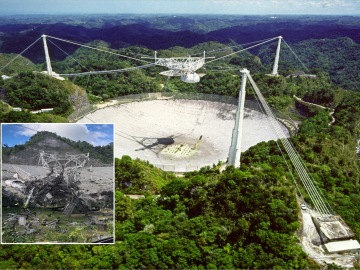
For more than half a century, the 1,000-foot-diameter spherical reflector dish at the Arecibo Observatory in Puerto Rico was the largest radio telescope in the world. Completed in 1963, the dish was built in a natural sinkhole, with the telescope’s feed antenna suspended 500 feet above the dish on a 1.8-million-pound steel platform. Three concrete towers and more than 4 miles of steel cables supported the platform.
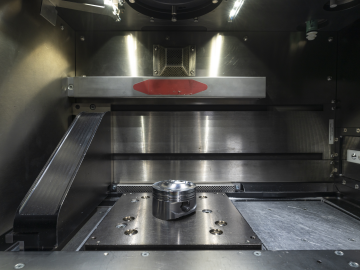
Dean Pierce of ORNL and a research team led by ORNL’s Alex Plotkowski were honored by DOE’s Vehicle Technologies Office for development of novel high-performance alloys that can withstand extreme environments.
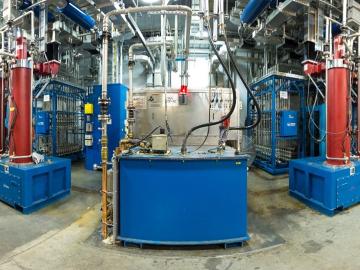
The Spallation Neutron Source at the Department of Energy's Oak Ridge National Laboratory set a world record when its particle accelerator beam operating power reached 1.7 megawatts, substantially improving on the facility’s original design capability.

Researchers at the Department of Energy’s Oak Ridge National Laboratory were the first to use neutron reflectometry to peer inside a working solid-state battery and monitor its electrochemistry.

Tristen Mullins enjoys the hidden side of computers. As a signals processing engineer for ORNL, she tries to uncover information hidden in components used on the nation’s power grid — information that may be susceptible to cyberattacks.
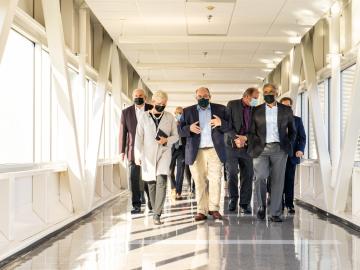
Ken Herwig's scientific drive crystallized in his youth when he solved a tough algebra word problem in his head while tossing newspapers from his bicycle. He said the joy he felt in that moment as a teenager fueled his determination to conquer mathematical mysteries. And he did.

Scientist-inventors from ORNL will present seven new technologies during the Technology Innovation Showcase on Friday, July 14, from 8 a.m.–4 p.m. at the Joint Institute for Computational Sciences on ORNL’s campus.

An advance in a topological insulator material — whose interior behaves like an electrical insulator but whose surface behaves like a conductor — could revolutionize the fields of next-generation electronics and quantum computing, according to scientists at ORNL.
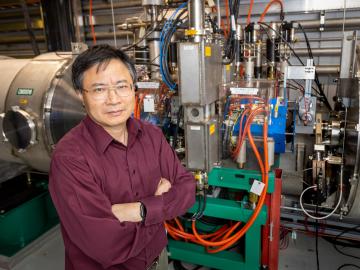
When opportunity meets talent, great things happen. The laser comb developed at ORNL serves as such an example.

Scientists at ORNL have invented a coating that could dramatically reduce friction in common load-bearing systems with moving parts, from vehicle drive trains to wind


